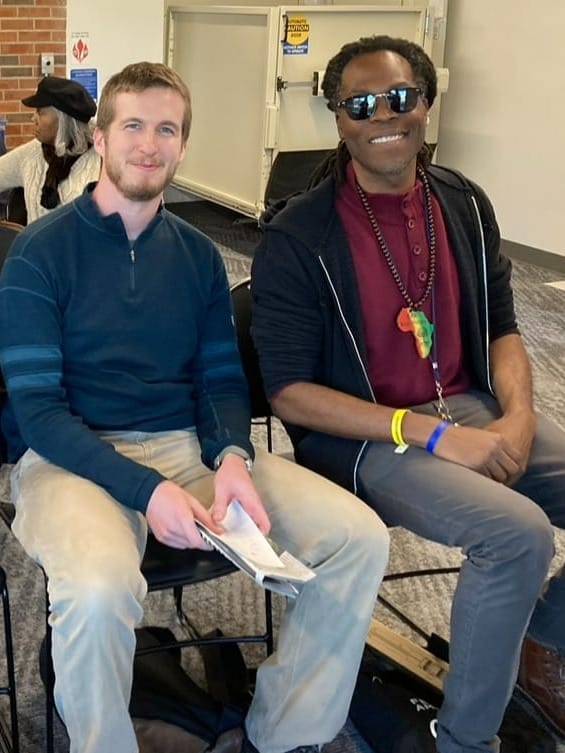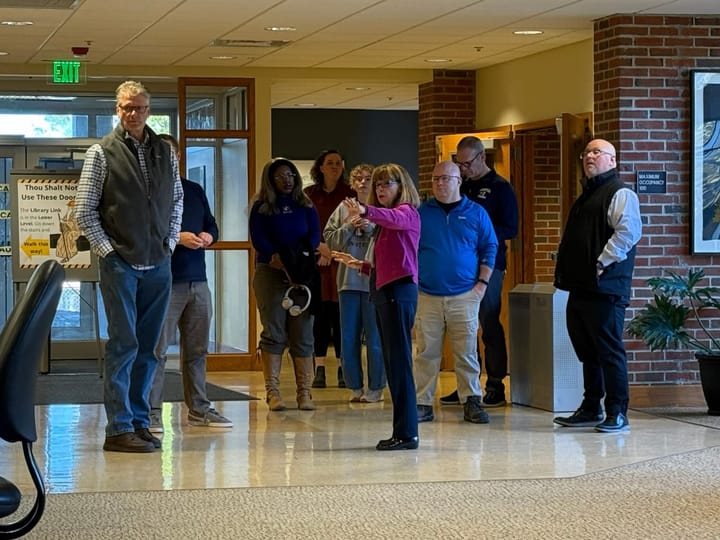$61K grant fuels effort to preserve Black history in Sioux Falls

A collection of 1,500 photos and 20 hours of film capturing the experiences of the Sioux Falls African-American community is being brought to life thanks to a new project at Augustana.
The funding, formally titled the African American Civil Rights History Grants Program, allocated $61,000 for preserving black history in Sioux Falls. Each year, the National Park Service administers the Historic Preservation Fund, which is distributed to all 50 states. This time, a portion made its way to Sioux Falls
“There are particular sorts of focuses,” Assistant Professor of History Will Wright said. “One of them is called the African-American civil rights history program. We applied for that, and we were informed in July of this year that we were awarded [the money].”
After receiving the news, three interns were hired with the funds: senior Erica Carmody, sophomore Mustafa Mumtaz and sophomore Kylie Roemen. This group assisted with the entire process, including interviewing long-time Black residents of Sioux Falls, most notably the family of Alfred White Sr.
“White Sr. was actually a photographer, and so he took photos of Sioux Falls,” Wright said. “I mean, basically the collection falls mostly from the 1940s through the 1970s. This is a time when cameras are expensive. Most people don’t take photographs, or very, very few, so this is kind of rare.”
Wright added that the images were historic due to them encapsulating a family’s unfiltered, day-to-day life. Additionally, this was during the Civil Rights Movement and showcased how these individuals were changed by it in our local area.
Recognizing their significance, the White family decided to donate the collection to Siouxland’s Heritage Museums.
“We had to watch, between the three of us and some help from the people at Irene Hall who watched some of the videos — there was about 20 hours of footage,” Carmody said. “So watching 30-minute videos in black and white and color. Seeing that family life was interesting.”
After observing the slides or footage, an intern would then document the details of the specific piece, such as what was happening, who was pictured or other general descriptions. This information would be input to a cataloguing database called Past Perfect.
Carmody said during regularly scheduled virtual meetings, the White family would be asked questions about one of their donated pieces, after which nostalgia would come flooding in. This reminiscing helped to ensure accuracy in the documentation process and that their father's legacy was properly preserved.
“It’s not just that you have more connection because you have to talk to the people in the images, but you get to talk to the children,” Carmody said. “You actually get to hear stories about, ‘Oh, that's Christmas. Well, here are the gifts we got.’ It's not just looking at a photo and not having a connection.”
Such close ties with the immediate family of White Sr., along with footage he took, revealed the events, activities and values of his life. One of which was involvement with Shriners International, a fraternal organization.
“That made up a good portion of the slides, at least 400 minimum, and at least four to six videos just of Shriner events. He was very involved in that,” Carmody said. “There are photos of dancing for Shriner events from what I recall in Canada, for example. They went to St. Louis for sure. They were in New York at one point — there are photos from everywhere.”
With such a dense collection, interns are still chipping away at their preservation. Carmody explained that due to the successful budgeting of the grant’s funds, research was extended through this first semester.
Mumtaz added that he was looking forward to furthering the research and found the history of the White family fascinating, especially its relation to the Black community in Sioux Falls. He will continue to interview the descendants and hear their stories.
Wright and his interns hope to encourage the preservation of African-American heritage by pursuing official designations for three different historic sites in Sioux Falls. They aim to apply for more grants in the future.
“A goal of ours is to increase representation within South Dakota’s history,” Wright said. “If there aren’t places that we can point to and say, look, you know, this is the place — then it becomes harder to sort of tell that story, so that’s why the historic preservation matters.”
The collection will be open to the public at the Irene Hall Resource Center, part of the Siouxland Heritage Museum.



